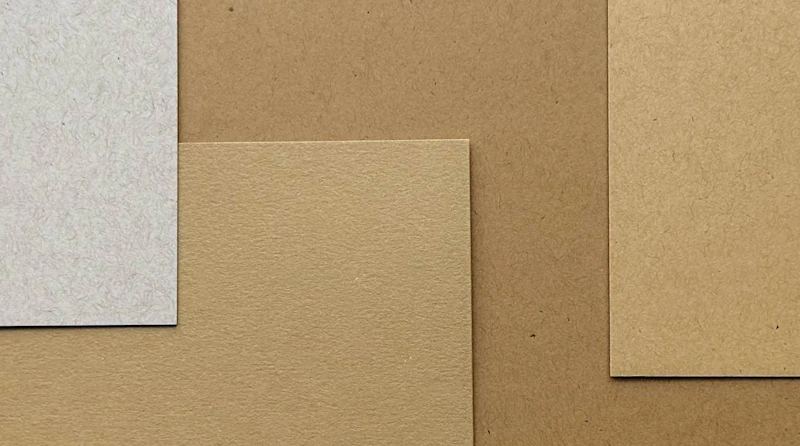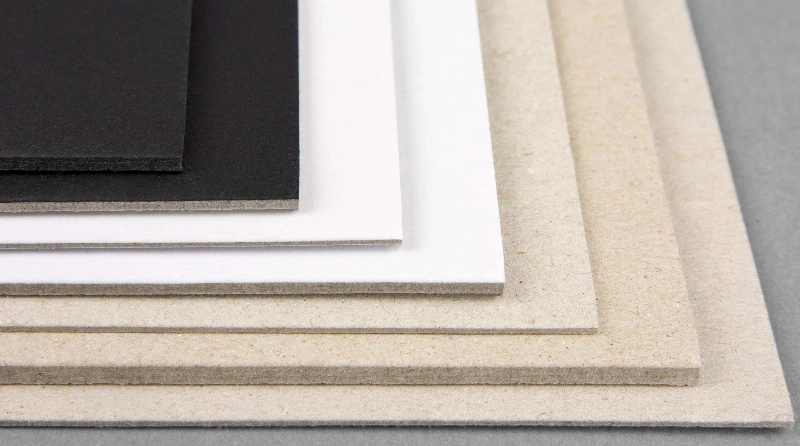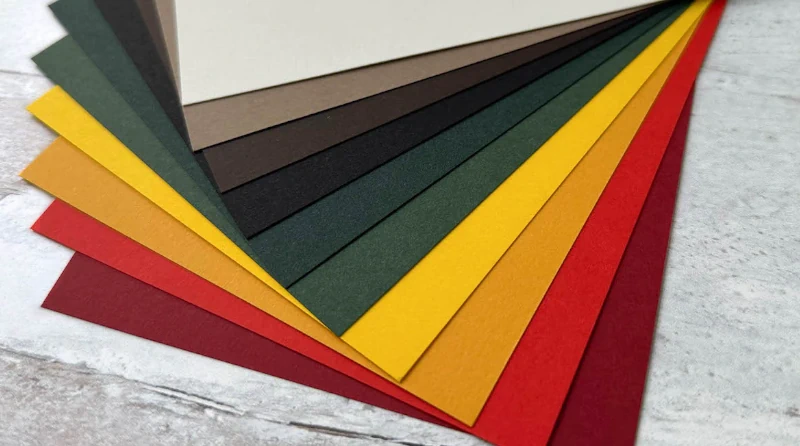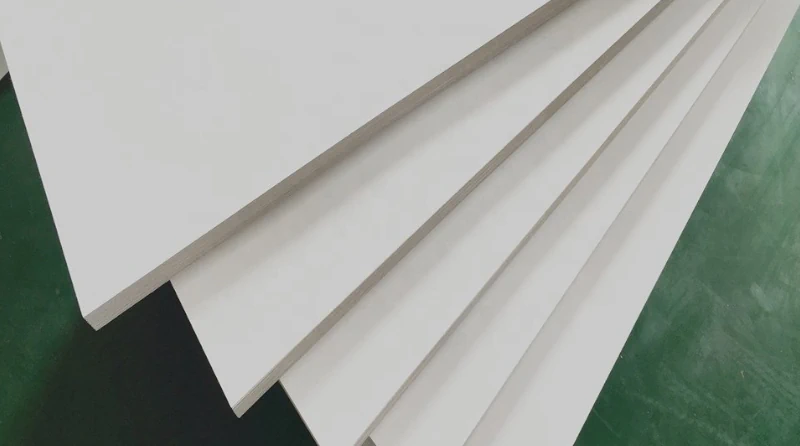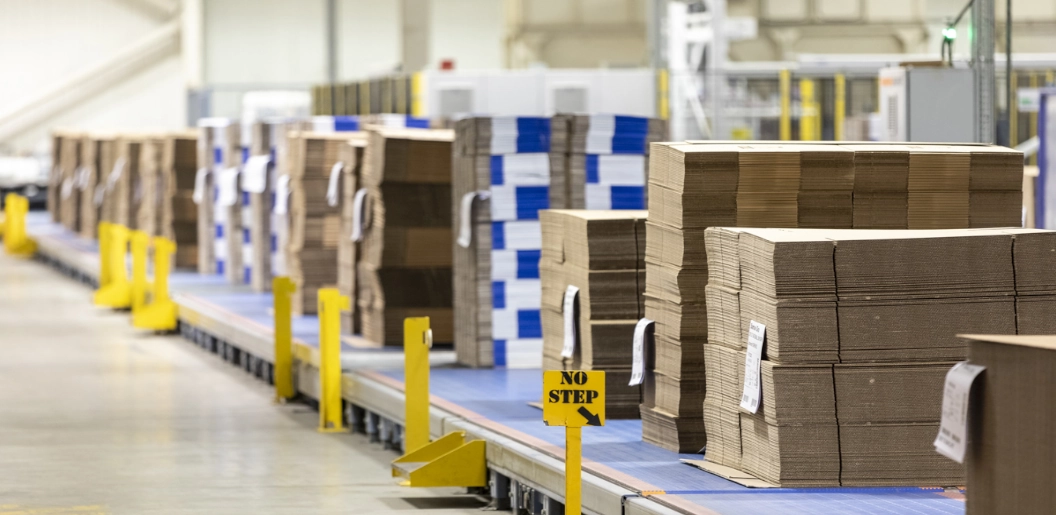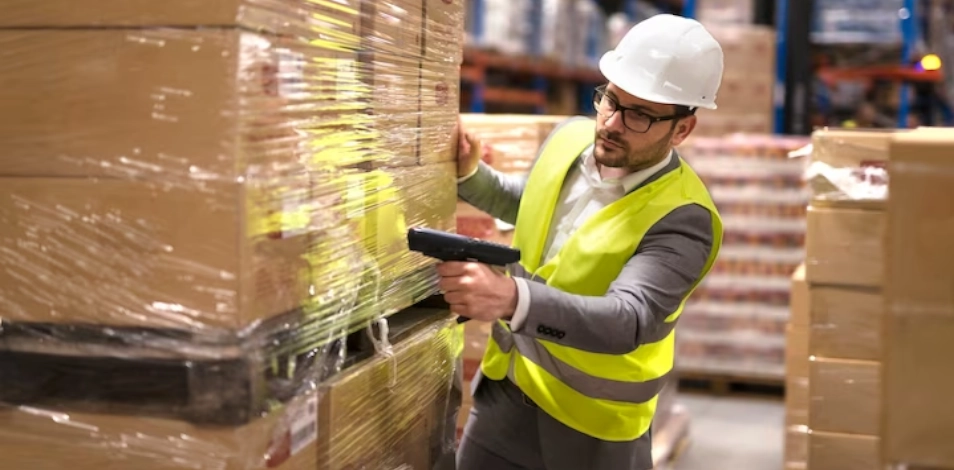Corrugated cardboard boasts a rich history spanning over two centuries, and its intriguing origins continue to captivate modern minds. Corrugated cardboard features a distinctive composition, a fluted layer securely bonded between two robust cardboard sheets. The versatility of this packaging marvel lies in the ability to enhance its structural strength by increasing the number of fluted layers. This fundamental arrangement serves as the building block for corrugated cardboard sheets and the resulting boxes.
Corrugated material consists of three to five layers of paper, an inner lining, an outer liner, and the pivotal fluting sandwiched between. The term “corrugated” stems from the robust nature of the fluted medium, underscoring its inherent strength. This versatile material has earned its place as the oldest recycled product available today. And it consists of more than 95% of the stuff we use daily transported in corrugated cardboard packaging.
Who Invented Corrugated Cardboard?
In 1871, Malcolm McLean, hailing from America, conceived a groundbreaking idea: employing corrugated cardboard boxes for shipping. He pioneered the creation of the initial container crafted from corrugated cardboard, designed for easy loading and unloading onto ships.
This revolutionary concept brought about a paradigm shift in the global transportation of goods, significantly enhancing the speed and efficiency of shipping processes. Considerable investments in research and development, coupled with the effective integration of customer feedback, have empowered manufacturers to develop proprietary lining and fluting in-house. This internal innovation ensures the necessary strength and durability to securely pack and transport valuable customer items.
Types of Corrugated Stock
Corrugated stock refers to a versatile category of materials used in the production of corrugated packaging. Comprising layers of paper, liners, and fluting, these stocks vary in thickness, strength, and composition to meet diverse packaging needs. As outlined earlier, the primary fluted layer of cardboard encompasses various types, including:
- Normal Slotted Glued Containers (RSC).
- RSC-stitched trays and racks.
- Die-cut containers.
- Single, double, and triple-walled configurations.
How is Corrugated Packaging Made?
To comprehend the nature of corrugated boxes, it’s essential to grasp their manufacturing process. Primarily derived from trees, a renewable resource, corrugated packaging stands out as one of the most recycled materials globally. Sourced sustainably from trees and recycled corrugated containers, the industry has maintained a robust recovery rate, reaching around 90% over the past eight years.
Once recycled, old corrugated containers (OCC) undergo a meticulous process of collection, sorting, compression, and baling for space-efficient storage. These compact bales are then transported to a paper mill where they undergo breakdown, with the corrugated material entering a pulper resembling a large blender.
Within the pulper, the components are agitated to form a slushy pulp of fiber and water. Subsequently, impurities are extracted, leaving behind a fiber solution that is poured onto a moving screen. This screen facilitates water drainage, resulting in the creation of a continuous fiber mat. Finally, this mat undergoes compression between rollers to eliminate excess moisture.
Building Blocks of Corrugated Stock
The building blocks of corrugated stock consist of essential components that form the foundation of effective packaging. Comprising layers of liners and fluting, these elements work in tandem to provide strength, flexibility, and protective cushioning. Understanding these building blocks is key to crafting durable and reliable packaging solutions for various products and industries. The following are the fundamentals of corrugated cardboard such as:
Flute Types
Presently, the prevalent corrugated flute types include A, B, C, E, and F, with A representing the largest flute size. The flute dimension plays a pivotal role in determining both the thickness of the box walls and its stacking strength. Progressing through B, C, E, and F flutes, the thickness gradually diminishes, resulting in a thinner board.
A- flute, approximately 5 mm thick, proves optimal for items requiring enhanced cushioning or robustness for stacking.
E Flute is really thin, about 1mm to 1.5mm thick, which makes it super strong against squeezing and crushing. Its fine waves also give it a smooth surface that’s great for printing.
B Flute is a bit thicker, around 3.2mm or ⅛ inch. In a foot of packaging, there are about 49 of these waves. B Flute is awesome for inside packaging because it’s tough and can handle pressure without getting crushed or punctured.
Board Types
There exist four primary types of boards utilized in the construction of corrugated boxes which are as:
In the case of single-wall boards, one sheet of corrugated medium is adhered between two sheets of liner. This type of board is widely encountered in the market and finds utility in various applications, ranging from shipping boxes to retail displays.
Conversely, double-wall boards involve the use of two sheets of corrugated medium sandwiched between three sheets of liner. This configuration is commonly employed for larger items or products necessitating a sturdier box for secure transportation.
Finally, the triple-wall board involves the adherence of three sheets of corrugated medium between four sheets of liner. This board stands as the most robust among the various designs and is typically deployed for commercial components or the construction of produce bins.

